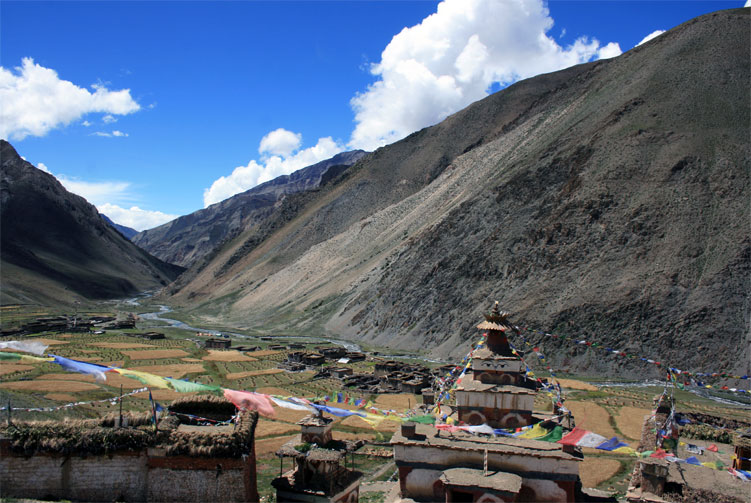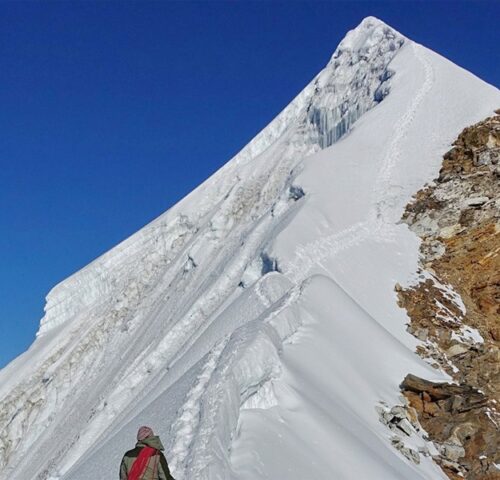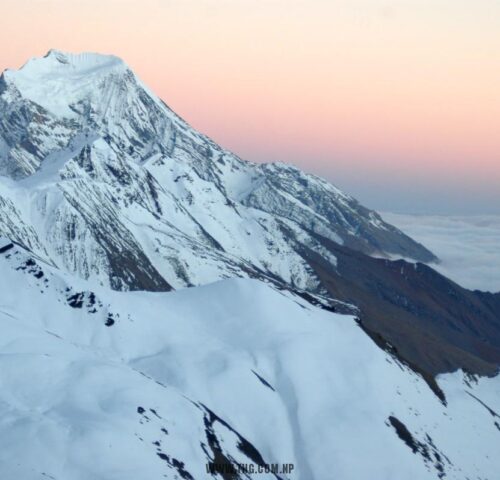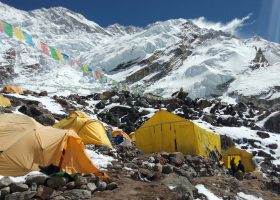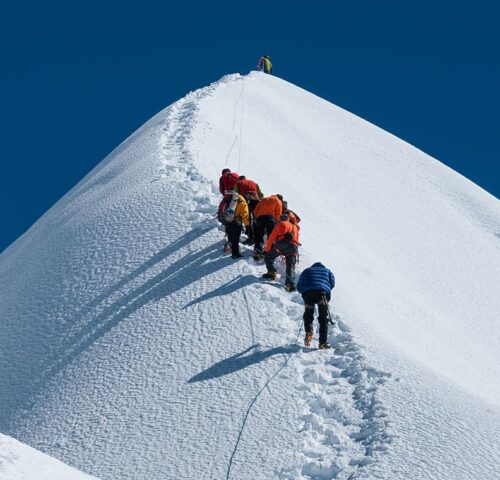Overview
The Lower Dolpo Trek is a remote and off-the-beaten-path trekking adventure in the Dolpo region of Nepal. It offers a unique and culturally rich experience in an isolated part of the Himalayas. Here's an overview of the Lower Dolpo Trek:
Location: Lower Dolpo is located in the northwestern part of Nepal, near the border with Tibet. It is one of the least-visited and most remote regions in the country.
Scenic Beauty: The Lower Dolpo region is renowned for its stunning landscapes, which include barren high plateaus, deep valleys, alpine meadows, and pristine mountain lakes. It is a paradise for nature enthusiasts and offers breathtaking views of the Himalayas.
Cultural Diversity: Lower Dolpo is home to a mix of Tibetan and Nepali communities. The region boasts a rich cultural heritage, with traditional Bon and Buddhist influences. You'll encounter unique customs, festivals, and monasteries during your trek.
Climatic Conditions: Lower Dolpo is located in the rain shadow of the Dhaulagiri and Annapurna mountain ranges, resulting in a dry and arid climate. This allows for trekking even during the monsoon season, making it a year-round destination.
Permits: To visit Lower Dolpo, you will need special permits, including the Lower Dolpo Restricted Area Permit and Shey Phoksundo National Park permit. These permits are typically arranged through registered trekking agencies in Nepal.
Trekking Duration: The Lower Dolpo Trek is an extended journey that can range from 2 to 4 weeks, depending on the specific route you choose and the pace of your trek.
Highlights:
-
Shey Phoksundo Lake: The trek often starts with a visit to the stunning Shey Phoksundo Lake, one of the deepest alpine lakes in Nepal. It is surrounded by rugged cliffs and lush forests.
-
Unique Villages: Lower Dolpo is dotted with remote and picturesque villages like Ringmo, Dho Tarap, and others, where you can experience traditional Himalayan culture and customs.
-
Gompa Visits: The region is home to several ancient monasteries and gompas, such as the Shey Gompa and the Namgung Monastery, which offer insights into the spiritual and religious aspects of the area.
-
Scenic Trails: You'll trek through a variety of landscapes, including forests of pine, oak, and rhododendron, arid high plateaus, and picturesque river valleys.
-
Rare Wildlife: Lower Dolpo is also home to rare wildlife, including snow leopards, blue sheep, and various bird species.
Challenges: The Lower Dolpo Trek is not without its challenges. The region is remote and less developed, and trekkers need to be self-sufficient in terms of supplies and resources. Accommodation options may be limited in some areas, and you should be prepared for rugged and sometimes steep trails.
Details Itinerary
Day 1: Arrival in Kathmandu (1,400 meters)
- Arrive in Kathmandu, the capital of Nepal.
- Attend a briefing with your trekking team and make any necessary preparations.
Day 2: Kathmandu - Permit Arrangements
- Obtain the required permits for the Lower Dolpo Trek.
- Spend the day preparing and finalizing equipment and logistics.
Day 3: Flight to Nepalgunj (150 meters)
- Take a domestic flight to Nepalgunj in the western Terai region.
- Rest and prepare for your journey to Dolpo.
Day 4: Flight to Juphal (2,320 meters) and Trek to Dunai (2,850 meters)
- Fly from Nepalgunj to Juphal, a small airstrip in the Dolpo region.
- Begin your trek from Juphal to Dunai, the district headquarters of Dolpo.
- Stay overnight in Dunai.
Day 5: Dunai to Tarakot (2,537 meters)
- Trek from Dunai to Tarakot along the Barbung Khola.
- Pass through a few remote villages and enjoy the local culture.
- Stay overnight in Tarakot.
Day 6: Tarakot to Laina Odar (3,370 meters)
- Trek to Laina Odar, crossing the Tarap Khola.
- The trail passes through terraced fields and villages.
- Stay overnight in Laina Odar.
Day 7: Laina Odar to Nawarpani (3,475 meters)
- Continue your trek to Nawarpani, following the Barbung Khola.
- Enjoy the scenic landscapes and cultural encounters.
- Stay overnight in Nawarpani.
Day 8: Nawarpani to Do Tarap (4,090 meters)
- Trek to Do Tarap, the largest village in the region.
- Explore the village and its monasteries.
- Stay overnight in Do Tarap.
Day 9: Acclimatization Day in Do Tarap
- Take a rest day to acclimatize to the higher altitudes.
- Explore the surrounding area or visit local monasteries.
Day 10: Do Tarap to Numa La Base Camp (4,440 meters)
- Begin your ascent to Numa La Base Camp.
- The trail becomes more remote and rugged.
- Stay overnight at the base camp.
Day 11: Numa La Base Camp to Danighar (4,800 meters) via Numa La Pass (5,190 meters)
- Cross Numa La Pass, which is the highest point of the trek.
- Descend to Danighar on the other side.
- Stay overnight in Danighar.
Day 12: Danighar to Temche (3,960 meters) via Baga La Pass (5,070 meters)
- Trek to Temche, crossing Baga La Pass.
- Enjoy the panoramic mountain views from the pass.
- Stay overnight in Temche.
Day 13: Temche to Yak Kharka (4,020 meters)
- Continue your descent to Yak Kharka.
- The landscape becomes greener and more hospitable.
- Stay overnight in Yak Kharka.
Day 14: Yak Kharka to Phoksundo Lake (3,611 meters)
- Trek to Phoksundo Lake, a stunning alpine lake.
- Explore the lake and the nearby village of Ringmo.
- Stay overnight near Phoksundo Lake.
Day 15: Explore Shey Phoksundo (3,611 meters)
- Spend the day exploring Shey Phoksundo, its gompa, and the surrounding natural beauty.
Day 16: Phoksundo Lake to Chepka (2,670 meters)
- Begin your descent toward Chepka.
- The trail goes through dense forests and traditional villages.
- Stay overnight in Chepka.
Day 17: Chepka to Juphal (2,320 meters)
- Complete your trek by returning to Juphal.
- Celebrate the successful completion of the Lower Dolpo Trek.
- Stay overnight in Juphal.
Day 18: Flight to Nepalgunj and Return to Kathmandu
- Fly back to Nepalgunj and then return to Kathmandu.
- Enjoy a relaxing evening in Kathmandu.
Day 19: Kathmandu - Rest and Leisure
- Spend a day at leisure in Kathmandu.
- Explore the city, do some shopping, or rest and recover.
Day 20: Departure from Kathmandu
- Depart from Kathmandu for your onward journey.
Cost Details
Cost include on:
• 2 Night hotel in Pokhra including breakfast
• Kathmandu /Pokhara/Kathmandu by tourist Bus.
• 3 times meal during the hiking. (2 breakfast,3 Lunch and 2 dinners.
• 2-night lodge accommodation in trekking.
• 1 Hiking Guide
• Necessary Trekking permit and necessary paper.
Cost does not include on:
• all food in Pokhara
• personal expenses, phone call, laundry service etc.
• all bar bill coke, beer, water etc.
• Tips for guide, porter and driver.
Map
Manual Notes:
Please note that this itinerary is a general guideline and can be adjusted based on factors like weather, trekking conditions, and your preferences. The Lower Dolpo Trek is a challenging and remote journey, and trekkers should be well-prepared for the rugged terrain, altitudes, and unpredictable conditions in this stunning but isolated region.
Latest Traveller’s Reviews
The travel experiences of our guest who recently returned from their trips.
 100% Rating
100% Rating
-
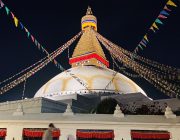 Kopila DhakalDeutsch Mingmar is a renowned trekking and expedition company that specializes in creating memorable and exhilarating adventures in the majestic Himalayas. With a deep passion for exploration and a commitment to safety, we strive to provide our clients with extraordinary experiences that combine the thrill of adventure with the awe-inspiring…November 2, 2023
Kopila DhakalDeutsch Mingmar is a renowned trekking and expedition company that specializes in creating memorable and exhilarating adventures in the majestic Himalayas. With a deep passion for exploration and a commitment to safety, we strive to provide our clients with extraordinary experiences that combine the thrill of adventure with the awe-inspiring…November 2, 2023 -
 Mingmar SherpaDeutsch Mingmar is a renowned trekking and expedition company that specializes in creating memorable and exhilarating adventures in the majestic Himalayas. With a deep passion for exploration and a commitment to safety, we strive to provide our clients with extraordinary experiences that combine the thrill of adventure with the awe-inspiring beauty of the Himalayan region.October 18, 2017
Mingmar SherpaDeutsch Mingmar is a renowned trekking and expedition company that specializes in creating memorable and exhilarating adventures in the majestic Himalayas. With a deep passion for exploration and a commitment to safety, we strive to provide our clients with extraordinary experiences that combine the thrill of adventure with the awe-inspiring beauty of the Himalayan region.October 18, 2017 -
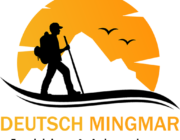 Kedar AdhikariDeutsch Mingmar is a renowned trekking and expedition company that specializes in creating memorable and exhilarating adventures in the majestic Himalayas. With a deep passion for exploration and a commitment to safety, we strive to provide our clients with extraordinary experiences that combine the thrill of adventure with the awe-inspiring beauty of the Himalayan region.July 6, 2017
Kedar AdhikariDeutsch Mingmar is a renowned trekking and expedition company that specializes in creating memorable and exhilarating adventures in the majestic Himalayas. With a deep passion for exploration and a commitment to safety, we strive to provide our clients with extraordinary experiences that combine the thrill of adventure with the awe-inspiring beauty of the Himalayan region.July 6, 2017

